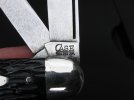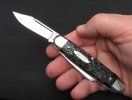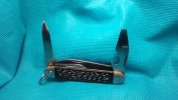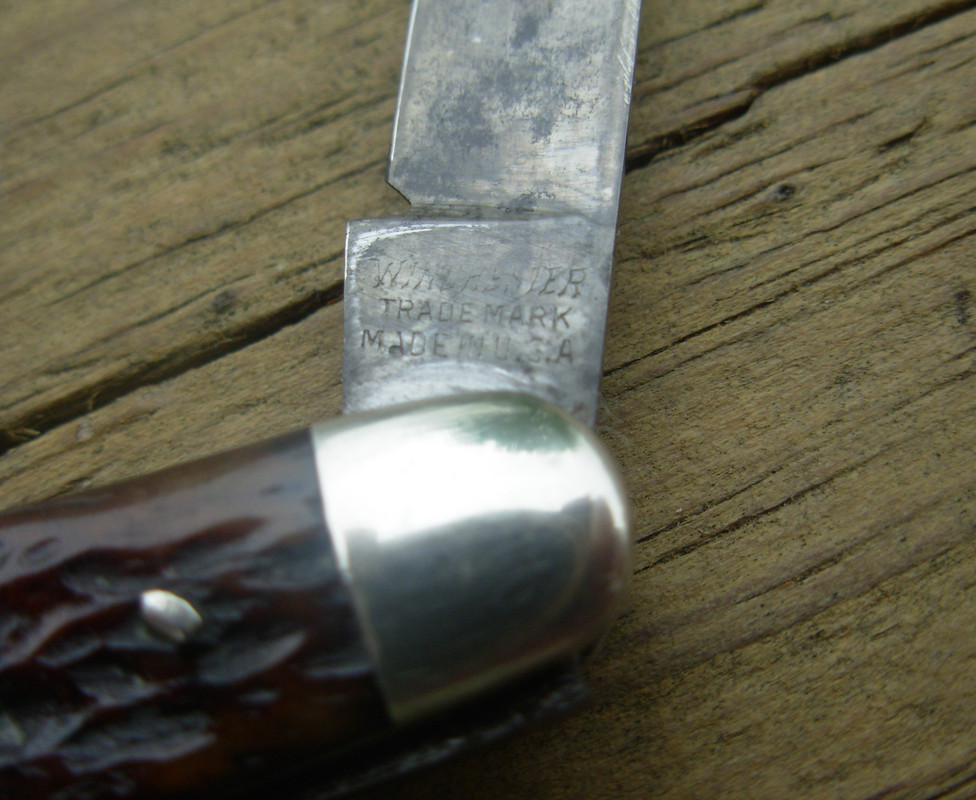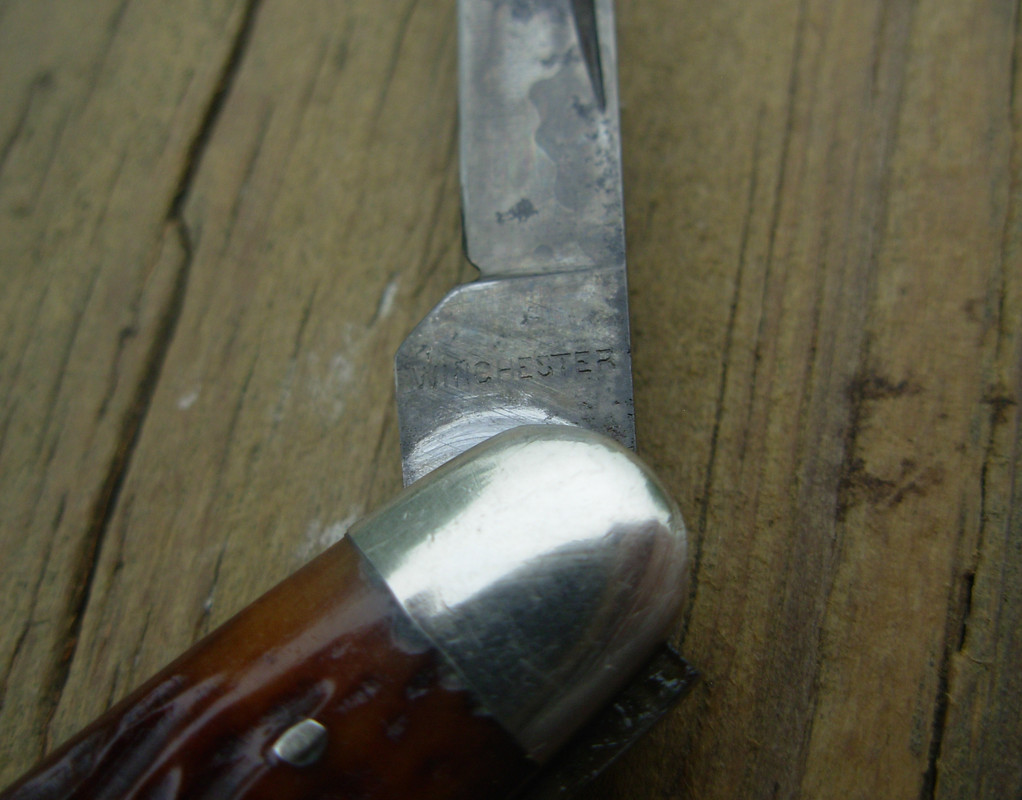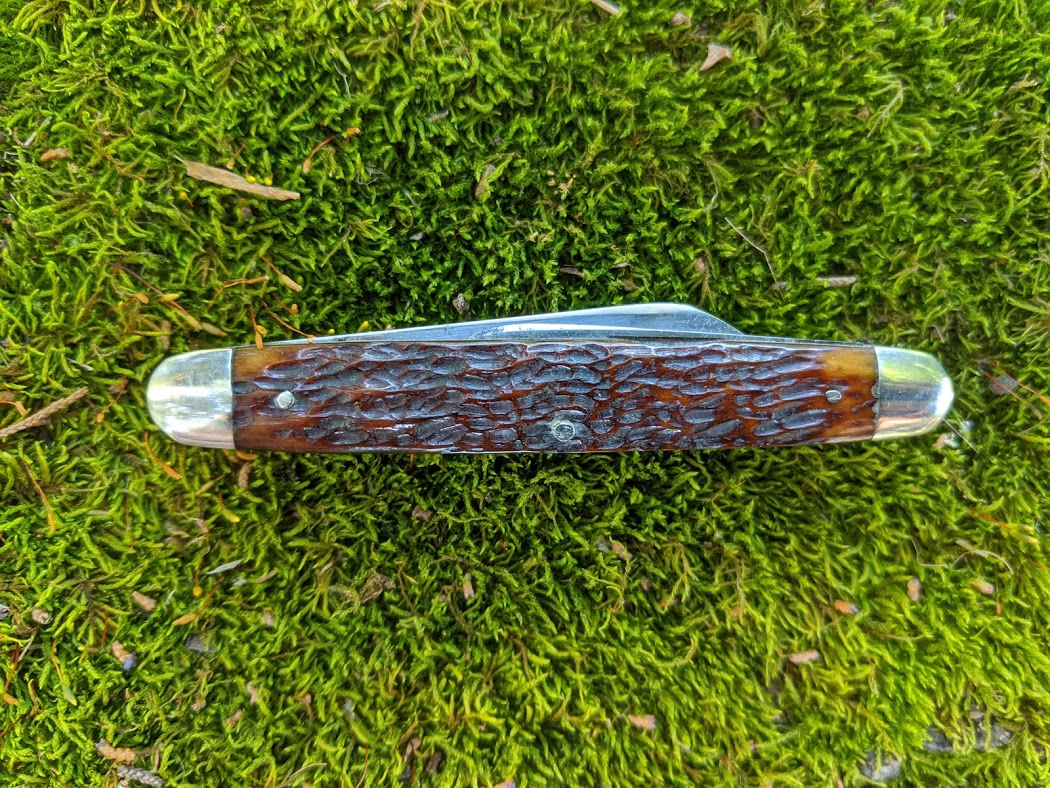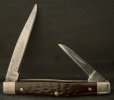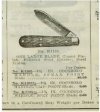BrotherJim
Gold Member
- Joined
- Feb 9, 2015
- Messages
- 4,246
I don't tote the same pocket knife every day. Seldom do I tote the same pocket knife more than a day at a time. Sometimes not even the same one all day.
Pulled out this stockman for Wednesday and thought, this is the oldest pocket knife I actually tote and use ... even if not daily.
Some of you, perhaps many of you have older knives you tote and use and hopefully will share.
I would not be shocked to find that a few may only have relatively recent traditional pocket knives.
Please share those as well ... if it's the oldest you actually tote and use, it's the oldest you tote and use.
Not asking to see safe queens ... those aren't toted and used.
Not asking to see a whole bunch of knives from your collection ... there is after all, only one(1) that is oldest you tote and use.
So here's mine. Not ancient by any standard, but the oldest I actually tote and use.
Camillus Stockman made for Sears 1927-1940
No Camillus marks or stamps. The only tang stamp is shown in the pic.
There was a Sears Craftsman main blade etch at one time, that is now long gone. No shield.
Smooth walk 'n talk. Good snap. No blade play. No blade half-stop. Good transitions.
Long pull main. The other two blades have nicks. No cracks or gaps in the bone.
Springs flush open and closed expect the spey when open, leaves the spring slightly proud. About 3 7/8" closed.
Pretty sharp but may touch up today just to pass the time and relaxation. Maybe a little oil here and there.

Pulled out this stockman for Wednesday and thought, this is the oldest pocket knife I actually tote and use ... even if not daily.
Some of you, perhaps many of you have older knives you tote and use and hopefully will share.
I would not be shocked to find that a few may only have relatively recent traditional pocket knives.
Please share those as well ... if it's the oldest you actually tote and use, it's the oldest you tote and use.
Not asking to see safe queens ... those aren't toted and used.
Not asking to see a whole bunch of knives from your collection ... there is after all, only one(1) that is oldest you tote and use.
So here's mine. Not ancient by any standard, but the oldest I actually tote and use.
Camillus Stockman made for Sears 1927-1940
No Camillus marks or stamps. The only tang stamp is shown in the pic.
There was a Sears Craftsman main blade etch at one time, that is now long gone. No shield.
Smooth walk 'n talk. Good snap. No blade play. No blade half-stop. Good transitions.
Long pull main. The other two blades have nicks. No cracks or gaps in the bone.
Springs flush open and closed expect the spey when open, leaves the spring slightly proud. About 3 7/8" closed.
Pretty sharp but may touch up today just to pass the time and relaxation. Maybe a little oil here and there.

Last edited:




